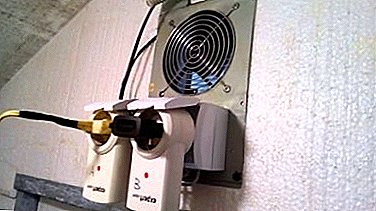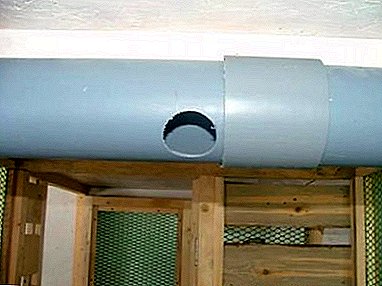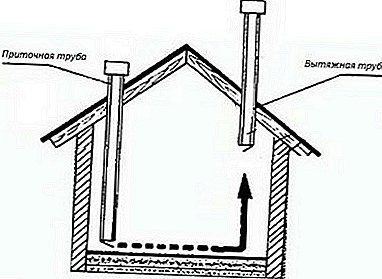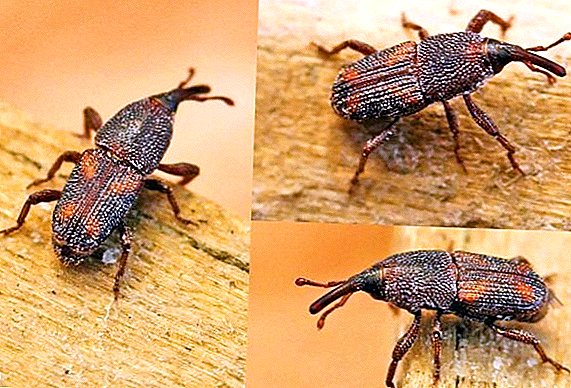
Beginners poultry farmers do not even know about all the difficulties that they have to overcome on their way before adjusting the conditions of chickens. The first step is to establish the work of the ventilation system in the chicken coop.
Wrong thoughts about the fact that its construction implies a simple drilling of ventilation holes. They can not appear anyhow where, in order not to suffer the productivity and health of chickens. On the types and device of ventilation for the chicken coop, we will discuss in this article. See also a useful video on the topic.
What it is?
Chicken - the most unpretentious poultry. She gets everybody who lives in the countryside. Although she can live in a small shed without special conditions, but poultry farmers with experience approach to its creation responsibly. The first thing they worry about is the ventilation system, without constructing it at random without taking into account the internal features of the room and the number of livestock.
What is it for?
Many novice breeders do not dare to install the ventilation system in the hen house with their own hands. Are they right? No, but why spend more on it? It removes harmful ammonia fumes from the chicken coop so that the chickens do not get severely poisoned, do not get seriously ill, and don’t stop laying eggs. When installing a fan, humidity (sixty-eighty percent) and temperature of air masses are regulated: indoors will never be damp and hot. Requirements:
- Ensuring a constant flow of fresh air.
- No drafts to prevent poultry diseases and livestock death.
How to determine on your own whether the ventilation system works correctly?
TIP: To do this, go to the chicken coop and spend some time in it. If during the visit there is an obvious lack of air, there are headaches, there is no ventilation, or the vents for vents are chosen erroneously.
Types and device
 Most often in the chicken coop install the usual exhaust or do the exhaust ventilation. Both options are easy and the breeder can handle all the work himself. For example, in the first case, windows will be needed to provide fresh air. With the door open and windows in the ceiling or above it with a latch, they adjust the air circulation in the room.
Most often in the chicken coop install the usual exhaust or do the exhaust ventilation. Both options are easy and the breeder can handle all the work himself. For example, in the first case, windows will be needed to provide fresh air. With the door open and windows in the ceiling or above it with a latch, they adjust the air circulation in the room.
Sometimes poultry farmers prefer ventilation, which can be made with their own hands, considering it more efficient. How to make a hood? For its construction it is enough to buy two pipes with a diameter of 19-22 cm and a length of 1.9-2.1 m, if the area of the chicken coop is 12 square meters. meters and place them in the right places.
Supply and exhaust system do it yourself
Before building a ventilation system, they are determined with its appearance, acquire the necessary tools and building materials.
Supply and exhaust system - a solid option. Its principle is the organization of the inflow / extraction of air masses. It works effectively in spring and autumn:
- In order to build it, buy two pipes. Their diameter should be 20 cm, and the length - 200 cm. The first pipe will be responsible for the flow of fresh air, and the second - for its abstraction.
- The first is set above the place where the hens rarely are, and the second is fixed above the roost.
Mechanical
In this case, it is impossible to solve the problem with the influx of fresh air by punching the window, unless you buy an axial fan and fix it inside.
Fan in the hen house include if needed. To reduce energy costs, it is rarely equipped with a climate sensor for automatic control of humidity and air temperature.
Equipment installation process:
 Choosing the perfect location for the device window.
Choosing the perfect location for the device window.- After making a window, buy a conventional or axial fan.
- Installation of the fan in the window. With its installation any poultry farmer will cope, possessing the minimum knowledge and skills.
- Check fan operation. Run manually.
- Install, if necessary, additional sensors to monitor the humidity of the air in the room. The disadvantage of this action is the appearance of electricity costs.
Watch the video about installing mechanical ventilation in the hen house:
Natural construction
If the area of the chicken coop is small, then normal ventilation is sufficient for air exchange.. First, it will not create a serious gap in the budget. Secondly, even a non-professional will cope with its device. You only need to cut through the window in the wall or in the ceiling. When placing the ceiling windows solve the problem with lighting:
- For the device of natural ventilation construct a vertical channel with a square cross section. Its optimum diameter is twenty by twenty cm.
Boards - the main material that will be needed during construction.
- The inner area is divided into 2 parts. The upper exit is closed by carefully sealing the walls with sealant and painting them. It also makes holes.
- Fresh air enters the longitudinal compartment on the leeward side, and the second is displayed on the street.
From plastic pipes
Well proven ventilation of plastic pipes. It is used in small areas:
 To do this, take a 2-meter pipe with a diameter of about twenty centimeters.
To do this, take a 2-meter pipe with a diameter of about twenty centimeters.- After that, make holes in the ceiling. The first should be over the roost, and the second - in a place where chickens spend less time. The diameter of the holes is the same as that of the pipes.
- Fixing the pipe over the perches, make sure that it is 1.5 m above the roof of the chicken coop, but in the interior it is enough to ensure its elimination by 0.3 m.
- The second pipe is fixed at 0.2 m from the floor. It is needed to ensure the ingress of fresh air inside.
- The pipe over the perches removes warm air with ammonia vapors.
- Special “umbrellas” are fixed outside of both pipes to prevent the occurrence of snow and raindrops.
Watch the video about ventilation in a plastic pipe hen house:
For winter
Consider the features of the ventilation of the domestic chicken coop in the winter, how to install according to a scheme without electricity? Far from the best option for airing in winter is natural ventilation.. Airing the room by opening the doors and windows gives serious heat loss, which leads to the death of livestock. Do not buy a heater?
In winter, passive ventilation has proven itself well, which removes dangerous vapors and provides access to fresh air. It has many advantages, in particular the following:
- no increase in electricity bills;
- round-the-clock autonomous work;
- performance of tasks;
- silent work.
How to make a scheme without electricity?
 Before constructing ventilation, draw the scheme. It indicates the location of the two holes. They should be on opposite sides. Two corrugated pipes with a diameter of 0.2 m will pass through these holes.
Before constructing ventilation, draw the scheme. It indicates the location of the two holes. They should be on opposite sides. Two corrugated pipes with a diameter of 0.2 m will pass through these holes.- Near the nests and perches do not have a "supply" pipe. But the second hole is made, on the contrary, in the place where chickens walk, hatch eggs.
- According to the scheme, ventilation is constructed without worrying about heat loss: they will be absent.
Many poultry farmers buy and install a fan with temperature and humidity sensors in the exhaust pipe. for active air movement. To save electrical energy in the case of installing sensors, turn it on when dampness appears.
Conclusion
Each poultry farmer in his own way solves the problem with ventilation in the hen house. Some do not bother with its arrangement at all, until they are faced with the loss of livestock chickens and its frequent diseases. Only after the appearance of problems, they choose between forced-air and exhaust ventilation and natural ventilation, and then construct it themselves without much trouble.


 Choosing the perfect location for the device window.
Choosing the perfect location for the device window. To do this, take a 2-meter pipe with a diameter of about twenty centimeters.
To do this, take a 2-meter pipe with a diameter of about twenty centimeters. Before constructing ventilation, draw the scheme. It indicates the location of the two holes. They should be on opposite sides. Two corrugated pipes with a diameter of 0.2 m will pass through these holes.
Before constructing ventilation, draw the scheme. It indicates the location of the two holes. They should be on opposite sides. Two corrugated pipes with a diameter of 0.2 m will pass through these holes.









